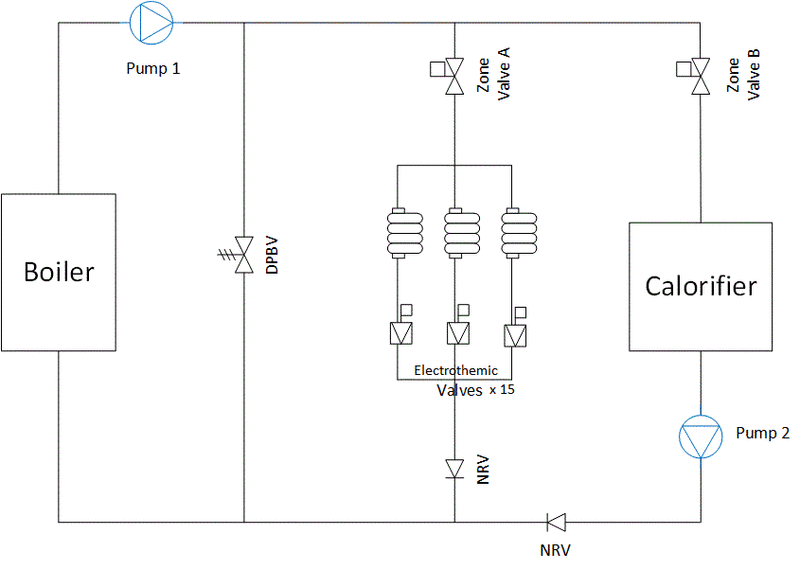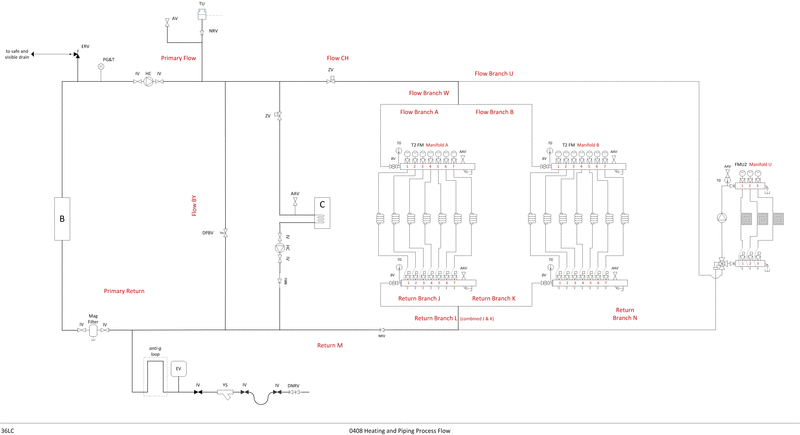VapourSnow
Specifier/Regulator
Could two centrifugal pumps of the same type be used in series in constant pressure mode, where the pumps are set to deliver different heads please?
The system is a closed circuit, which can operate in two different modes:
Mode A: Only pump 1 operates, zone valve closed for circuit with pump 2. Load can vary, pump 1 maintains constant pressure, with minimum flow ensured by a differential pressure bypass valve.
Mode B: Both pumps operate, fixed load, higher pressure and flow required than in mode A. Pumps would be well apart in the system, with part of the load between discharge of pump 1 and suction of pump 2; and the rest of the load between discharge of pump 2 and suction of pump 1.
I could find very little information about running pumps in series in constant pressure mode; so any help or guidance would be very much appreciated thanks.
The system is a closed circuit, which can operate in two different modes:
Mode A: Only pump 1 operates, zone valve closed for circuit with pump 2. Load can vary, pump 1 maintains constant pressure, with minimum flow ensured by a differential pressure bypass valve.
Mode B: Both pumps operate, fixed load, higher pressure and flow required than in mode A. Pumps would be well apart in the system, with part of the load between discharge of pump 1 and suction of pump 2; and the rest of the load between discharge of pump 2 and suction of pump 1.
I could find very little information about running pumps in series in constant pressure mode; so any help or guidance would be very much appreciated thanks.


